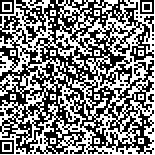下载中心
优秀审稿专家
优秀论文
相关链接
摘要

在中国控制SARS(Severe Acute Respiratory Syndrome)疫情扩散与蔓延的大量科学实践活动基础上,从人地系统科学的理论和观点出发,提出了各种致病因子在人地互动过程中转移路径的逻辑模型,进而又提出了控制SARS疫情发展的人地互动逻辑模型。从后一个模型出发,把中国SARS疫情的发展规律归纳为5种传播模式,即异类病毒转移传播模式、家庭和社区接触传播模式、医院和门诊感染传播模式、市内随机扩散传播模式和飞点跳跃跨区传播模式。其中,跨区传播模式的影响最广泛、危害最巨大、控制起来最艰巨、复杂,是建立中国突发公共卫生事件应急机制、增强应急能力需要解决的主要问题和关键内容。为此,作者对中国的疫情控制应急机制及其实现提出了一些具体的看法和建议,包括对现有疫情系统进行技术改造和创新的建议,在全新运作机制和高技术基础上建立应急疫情监测控制信息系统的概念结构等内容。
Based on activities of SARS control in China and theory of human-earth systems science, a logic model of transmission channels of pathogenic factors in the processes of interaction between human and earth, and a logic model of interaction between human and earth for SARS control are sequentially presented. According to the latter, the spatial transmission patterns of SARS in China are separated into 5 modes: 1) pathogen transferring mode from wild animals to human beings;2) contact infectious mode in family and community;3) infectious mode in hospitals and clinics;4) random diffusion mode in urban area, and 5) jumping transmission mode among cities, regions and countries. The last one among them is a very complicated and difficult one to be controlled. Therefore, the mode is the most important target and task to be controlled in SARS outbreak. Correspondingly, a recommendation on the response mechanism of public health emergencies in China and the conceptual structure of surveillance and control information system with the mechanism are presented in order to control the effects caused by the mode mainly and efficiently.

